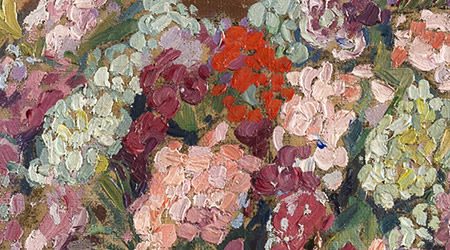The son of the great second-generation Impressionist, Henri Martin, Jacques Martin-Ferrieres was born in 1893. He became known as a painter of portraits and landscapes after periods of study under Cormon, Ernest Laurent, and last but not least, Henri Martin. He exhibited regularly in Paris at the Salon des Artistes Français and was able to submit work without vetting. At the Salon, he received an honourable mention in 1920, a silver medal in 1923, and a travel scholarship in 1924. He received the national prize in 1925, before finally being awarded a gold medal in 1928. He was also awarded The Legay-Lebrun prize (Prix de L’Institut). His style can be summarised briefly by his use of thick impasto which created a surface of great vitality and a wonderful basis for his experimentation with the effects of light.
Works by Martin-Ferrieres are in major museum collections including Louvre and Musee d’Art Moderne in Paris, Tate Gallery and Courtauld Institute in London, the Museum of Modern Art in New York, the Art Institute of Chicago, the Indianapolis Museum of Art, the Fine Arts Museum of San-Francisco, Fitzwilliam Museum in Cambridge, Ashmolean Museum in Oxford.













